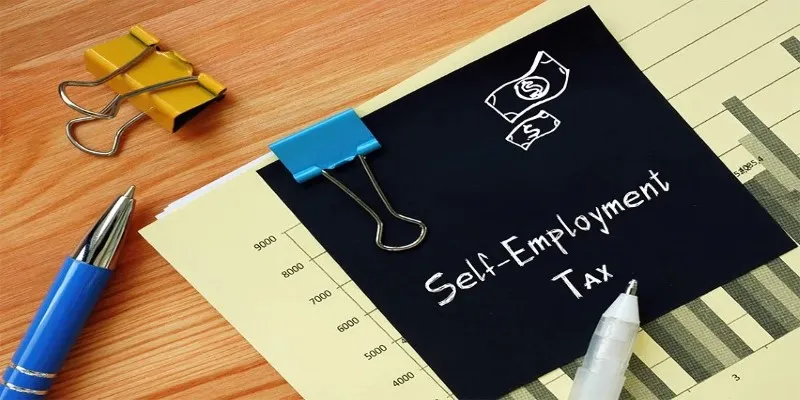What Is OASDI Tax and How Does It Affect You?
If you’ve ever scrutinized your paycheck and wondered about the “OASDI” deduction, you’re not alone. Although not commonly discussed, OASDI significantly impacts your financial future. How does it work, and why should you care?

In essence, this tax funds the Social Security program, a vital safety net supporting you in retirement, if you become disabled, or for your loved ones in case of your demise. This article breaks down the OASDI tax, explaining what it is, how it’s collected, its impact on your paycheck, and its importance for your long-term financial stability.
What is OASDI Tax?
OASDI stands for Old Age, Survivors, and Disability Insurance. It is a crucial component of the payroll tax system that finances the United States Social Security scheme. Social Security acts as a support mechanism for individuals during retirement, disability, or after the death of a family member. OASDI tax comprises two main parts: Old-Age Insurance and Disability Insurance.
The Old-Age Insurance (OAI) provides monthly benefits to eligible workers at retirement, while Disability Insurance (DI) offers benefits to disabled workers unable to work. Additionally, OASDI funds survivor benefits for dependents of deceased workers. Essentially, this tax serves as a safety net during hardships, providing a financial cushion for qualifying individuals and their families.
How Is OASDI Tax Collected?
OASDI tax is collected through payroll deductions. Each time you receive a paycheck, your employer automatically withholds the OASDI tax and sends it to the Internal Revenue Service (IRS). This means you don’t need to worry about paying this tax directly—it’s deducted from your gross earnings before you even receive your paycheck.

Employers play a significant role in ensuring the correct amount is deducted from employees’ wages. Every paycheck will indicate a portion of the OASDI tax under payroll deductions. Both the employee and employer contribute to this tax, but only the employee’s portion is withheld from their paycheck. The employer’s portion is paid separately by the company.
If you’re self-employed, the process differs slightly. The IRS treats self- employed individuals as both the employee and employer, meaning you’re responsible for paying both portions of the OASDI tax. This is managed through the Self-Employment Contributions Act (SECA), and you must file and pay this tax through your annual income tax return.
The Impact of OASDI Tax on Your Take-Home Pay
While crucial for funding Social Security benefits, OASDI tax directly affects your take-home pay each pay period. The 6.2% tax deducted from your earnings can feel substantial, especially if you’re on a tight budget. Remember, though, this money is being saved for your future. Without this funding, Social Security couldn’t support retirees, the disabled, or surviving family members during difficult times.
Employers match your contributions, meaning the government collects a total of 12.4% of your earnings for Social Security. This tax applies only to a portion of your income, specifically wages up to a certain limit each year. In 2024, the OASDI tax applies to earnings up to $160,200. If you earn above this amount, you won’t be taxed on the excess earnings for Social Security purposes, although other payroll taxes, like Medicare tax, may still apply.
While the OASDI tax reduces your current paycheck, it should be viewed as a long-term investment. This tax ensures that when you reach retirement age or face disability, you will have access to a stable source of income. For many people, Social Security benefits are a crucial component of their retirement income and overall financial security.
How Do Changes in the Economy Affect OASDI Tax?
OASDI tax rates and income limits can change over time, often in response to economic conditions. For example, the wage base limit (the maximum income subject to OASDI tax) is adjusted annually for inflation. These adjustments help ensure the Social Security program remains adequately funded, especially as the population ages and the number of beneficiaries grows.

Additionally, changes in the economy or government policy can lead to shifts in how OASDI tax is collected or used. For instance, during economic downturns or shifts in overall population health, the government might adjust the tax rate or eligibility criteria for benefits. As Social Security is a vital safety net for many Americans, any significant changes to the OASDI tax system could have far-reaching effects on both individual workers and the national economy.
Conclusion
OASDI tax is an integral part of the American tax system, providing financial security to individuals and families during difficult times. While it may feel like just another deduction from your paycheck, it plays a significant role in ensuring you and your loved ones have access to Social Security benefits in the future. Understanding how OASDI works can help you make informed financial decisions and give you a clearer picture of how your payroll taxes are used. Although it’s easy to overlook or feel frustrated by the OASDI tax, it’s a long-term investment in your future well-being, offering peace of mind throughout your life.











